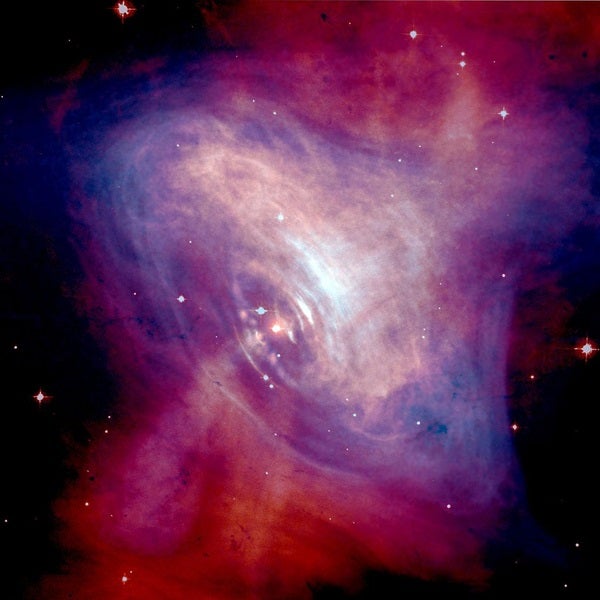A recent study on intermittent pulsars at the Arecibo Observatory in Puerto Rico done by a team of radio astronomers at Jodrell Bank in the UK, led by Professor Andrew Lyne of the University of Manchester, discovered two pulsars putting on a “cosmic vanishing act.”
Pulsars are highly magnetized neutron stars that spin very quickly, emitting narrow beams of electromagnetic radiation. When these beams sweep across the Earth, like the light from a lighthouse, we detect a pulsar.
The intermittent pulsars, which are a type of pulsar not commonly observed, switch between emitting as they usually would and then not producing any radio waves at all.
“They switch instantaneously between the states,” said Lyne in a press release. “They’re ON and then they’re gone, disappearing without any apparent warning.”
The team used a 7-beam receiver in their study to do a usual pulsar search, which they called the Pulsar Arecibo L-Band Feed Array (PALFA) Survey.
Pulsar PSR J1929+1357 was discovered in September of 2012 due to its very bright pulse emissions, but wasn’t confirmed as a pulsar until February 2013 after follow-up observations at Jodrell Bank.
“During the next 9 months it was observed no fewer than 650 times – 100 hours,” said Professor Benjamin Stappers of the Jodrell Bank Center for Astrophysicas and co-author on the paper. “It was ON on only five occasions – just 0.8 percent of the time.”
During the study, the team also discovered that the pulsar’s rotational slow-down rate is about 80 percent slower when it’s in the OFF period. They believe this is due to a lack of charged particle emission (for a reason still unknown) during the OFF state that causes a decreased spin-down rate.
Dr. Victoria Kaspi of McGill University in Canada and the principal investigator on the PALFA project said there may be more of these disappearing pulsars than regular ones and they may “redefine what we think of as normal.”
Other researches are still unsure about the disappearing pulsars.
“The explanation of the ON-OFF behavior remains a puzzle,” says Dr. Andrew Seymore, a USRA postdoc at Arecibo. “It indicates that the pulsar environment is changing, but just what those changes entail is open to debate.”
The pulsar community is not agreeing yet about the ON-OFF mechanism, but Lyne is still hopeful that more studies on PSR J1929+1357 will produce more answers on the spin-down phenomenon and the pulsar emission mechanism.










